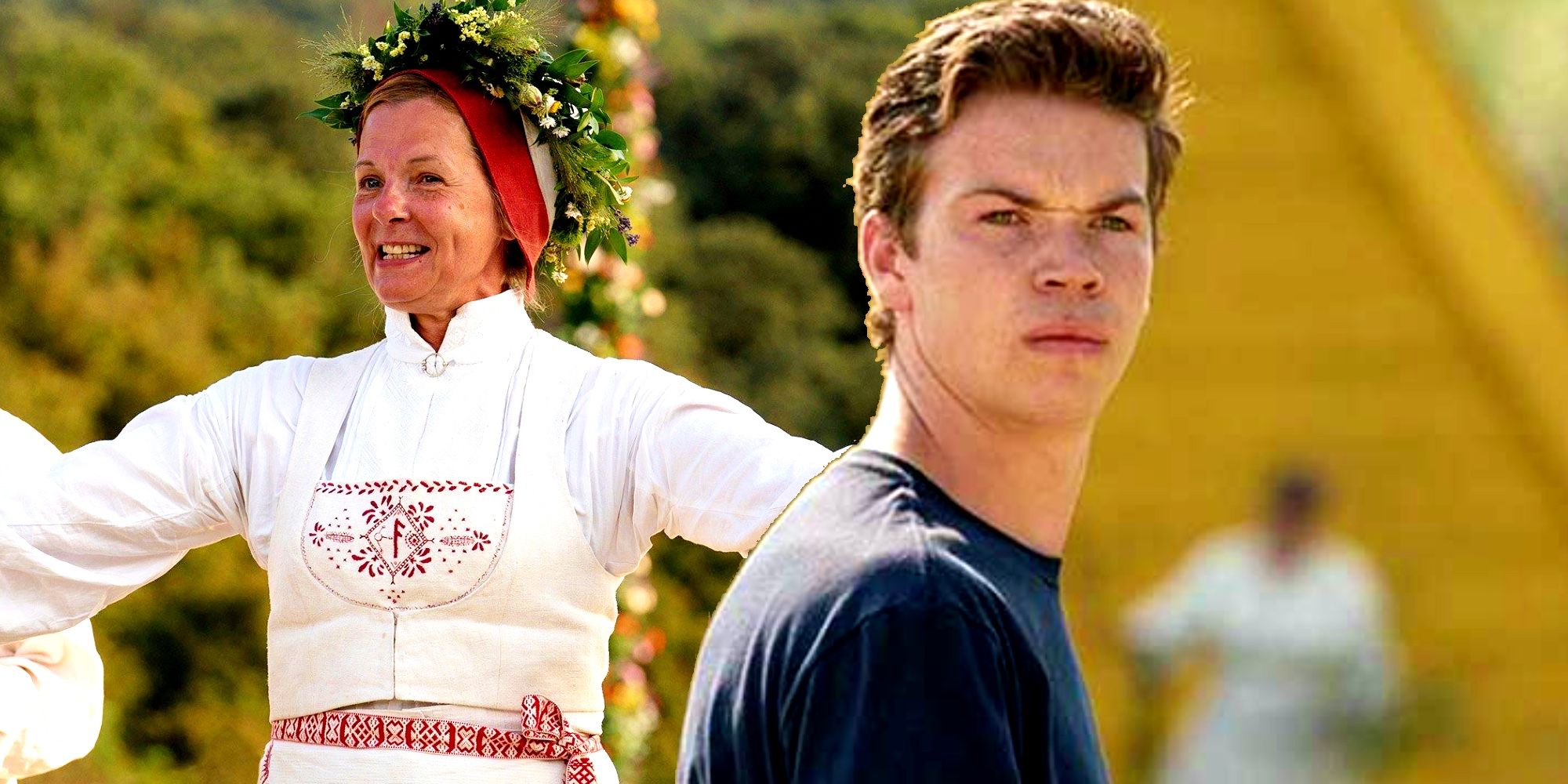Ari Aster's 2019 folk horror movie, Midsommar, focused primarily on terrifying Swedish and Pagan traditions through the actions of the Hårga cult, but one particularly disturbing practice can actually be attributed to the Viking culture.
After Dani (Florence Pugh), her boyfriend Christian (Jack Reynor), and his friends Mark (Will Poulter), Josh (William Jackson Harper), and Pelle (Vilhelm Blomgren) go to Pelle's ancestral commune in Sweden, they're warmly embraced by the Hårga, but something is immediately off. The young Americans - who have traveled to Sweden for sociological studies - are given hallucinogenic drugs and bear witness to a few, seemingly harmless traditions at first. Soon, things take a turn and after a particularly vicious sequence of senicide (murder of the elderly), the friends start to get picked off one by one. Most of this is due to their own actions; they're thoughtless of the Hårga's ways, despite having reasonably good intentions, and offend them. However, some of their deaths are simply part of the ritual celebrations, which is why they were brought there in the first place.
Mark meets his end relatively early in the movie. He urinates on a special, ancestral tree, and angers one of the Hårga, which essentially seals his fate. Later, when Josh is abruptly killed via a death blow to the head with a mallet, the audience is treated to the sight of a man wearing Mark's skin as a suit — face mask and all. It's a haunting image, and arguably one of the most terrifying in the movie. However, upon closer inspection, the fact that the skin suit contains pants conjures the Viking practice of nábrók, also known as "necropants" or "corpse britches". While there is a replica pair of these pants on display at the Museum of Icelandic Witchcraft and Sorcery in Hólmavík, the concept of using the skin from a person's entire lower body, then wearing them as pants likely hasn't existed outside of folk lore.
While only legend, the concept of Mark's body being used as nábrók is certainly a disturbing one. Also, given how it's used in Midsommar, deviates from the Icelandic lore itself. According to various texts written about the nábrók lore, one must get permission from the victim in order to use his skin as these presumably wealth-bringing pants. From there, the legend gets more disturbing — the necromancer or sorcerer must dig up the body of the dead person, skin them, and then put on the pants. After this, the pants will supposedly adhere to the wearer's flesh. The sorcerer must also write down a runic symbol and place a stolen coin - from a poor widow, no less - in the scrotum area, or pouch, of the pants for the ritual to be complete. Successfully completing this is said to bring the wearer infinite riches, though it's certainly a lot of work.
Likely, the Hårga cultists did not perform this ritual on Mark; the nábrók depicted in the horror movie were likely more just inspired by the concept rather than something actively practiced. For starters, the amount of time it would take to skin a corpse so thoroughly that it could become a pair of wearable pants would take a significant amount of time and skill. Beyond that, the likelihood of Ulf - who wore Mark's skin suit - or the others being able to get his permission to be used in such a manner seems unlikely. Ari Aster is a stickler for details in his work. The effort to research authentic practices and traditions was certainly a feather in the cap for Midsommar, which reignited an emerging folk horror trend, and was widely considered to be one of the best horror movies of 2019.


